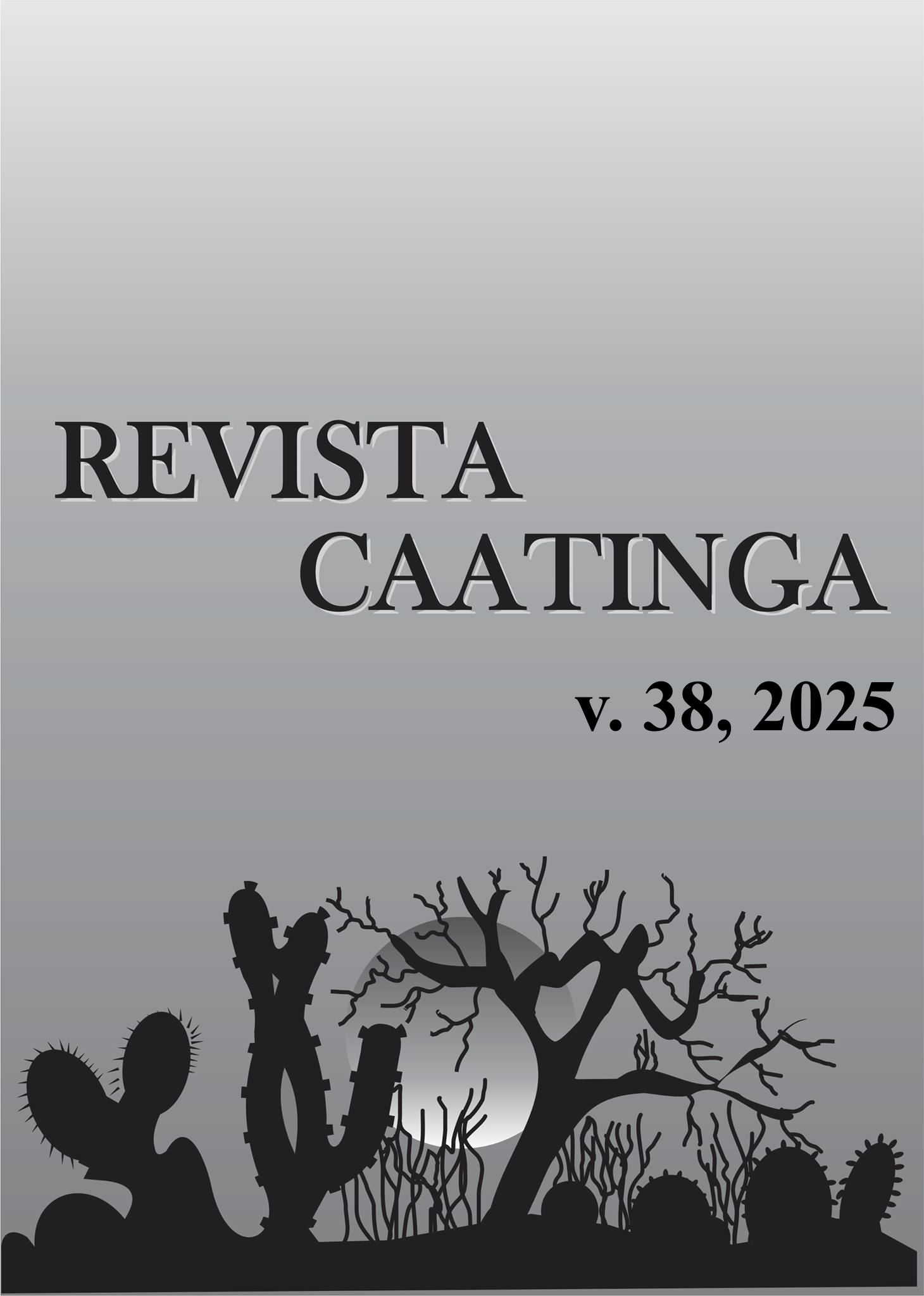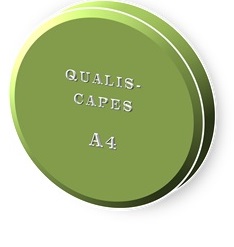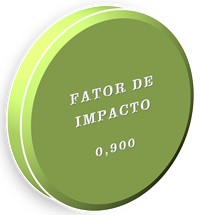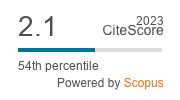Different biochar: effects on soil fertility and growth of bell pepper
DOI:
https://doi.org/10.1590/1983-21252025v3812730rcKeywords:
Capsicum annuum L.. Agricultural waste. Pyrolysis.Abstract
The use of agro-industrial waste as agricultural input is a sustainable alternative to recover soil fertility and increase productivity. The objective of this study was to evaluate the effects of biochars produced from poultry litter, coconut fiber, and rice straw on soil fertility and on the growth of green bell peppers grown in the field, in an Ultisol. Initially, soil samples were incubated with the three biochars at doses of 0.0, 6.0, 9.0, and 12.0 t ha-1 for 160 days, with moisture content around 70%. After this period, chemical analyses of the soil were performed. Then, an experiment was conducted in a randomized block design, in a 5 × 3 + 1 factorial scheme (five doses and three types of biochars, plus an additional treatment with mineral fertilizer), with four replicates. Poultry litter biochar promoted the greatest increases in pH, phosphorus (42.04 mg dm-3) and potassium (0.46 cmolc dm-3). Coconut fiber biochar also increased potassium (0.48 cmolc dm-3) and promoted greater accumulation of dry matter in the aerial part (33.87 g plant-1 with coconut fiber and 34.37 g plant-1 with poultry litter), surpassing mineral fertilization. Rice straw biochar did not promote significant improvements. Thus, coconut fiber and poultry litter biochars demonstrated potential as a sustainable alternative to improve soil fertility and bell pepper development.
Downloads
References
BAO, Z. et al. Long‐term biochar application promoted soil aggregate‐associated potassium availability and maize potassium uptake. GCB Bioenergy, 16: 1-13, 2024.
BRASIL. Ministério da Agricultura, Pecuária e Abastecimento. Manual de métodos analíticos oficiais para fertilizantes e corretivos / Ministério da Agricultura, Pecuária e Abastecimento. Secretaria de Defesa Agropecuária. Brasília, DF: MAPA, 2017. 240 p.
CARDOSO JÚNIOR, C. D. et al. Uso agrícola e florestal do biochar: estado da arte e futuras pesquisas. Research, Society and Development, 11: e55711225999, 2022.
CARNAVAL, L. D. S. C.; JAISWAL, A. K.; JAISWAL, S. Agro-food waste valorization for sustainable bio-based packaging. Journal of Composites Science, 8: 41, 2024.
DONAGEMA, G. K. et al. Manual de métodos de análise de solos. Dados eletrônicos. Rio de Janeiro, RJ: Embrapa Solos, 2011. 230 p.
FERNANDES, J. D. et al. Soil chemical amendments and the macronutrients mobility evaluation in oxisol treated with biochar. Journal of Agricultural Science, 10: 238-247, 2018.
FERNANDES, J. D. et al. Thermal treatment of poultry litter: part II. Evaluation of structural and morphological characteristics. Revista Brasileira de Engenharia Agrícola e Ambiental, 26: 680-687, 2022.
FERREIRA, D. F. Sisvar: a computer statistical analysis system to fixed effects split plot type designs. Revista Brasileira de Biometria, 37: 529-535, 2019.
GUARNIERI, S. F. et al. Coconut fiber biochar alters physical and chemical properties in sandy soils. Acta Scientiarum. Agronomy, 43: e51801, 2021.
KRZYSZCZAK, A.; DYBOWSKI, M. P.; CZECH, B. Microorganisms and their metabolites affect the content of polycyclic aromatic hydrocarbons and their derivatives in pyrolyzed material. Science of The Total Environment, 886: 163966, 2023.
LIU, X. et al. Amending biochar affected enzyme activities and nitrogen turnover in Phaeozem and Luvisol. GCB Bioenergy, 15: 954-968, 2023a.
LIU, Z. et al. Effect of Mg-modified waste straw biochar on the chemical and biological properties of acidic soils. Molecules, 28: 5225, 2023b.
LUSTOSA FILHO, J. F. et al. Biochars derived from olive mill byproducts: typology, characterization, and eco-efficient application in agriculture - A systematic review. Sustainability, 16: 5004, 2024.
NAGARAJU, K. et al. Exploring the benefits of rice husk waste: synthesis and characterization of biochar and nanobiochar for agricultural and environmental sustainability. International Journal of Environment and Climate Change, 13: 715-725, 2023.
NIU, M. et al. Biochar effectively promoted growth of Ardisia crenata by affecting the soil physicochemical properties. Plants, 13: 1736, 2024.
OBIA, A. et al. Biochar dispersion in a tropical soil and its effects on native soil organic carbon. Plos One, 19: e0300387, 2024.
ORTEL, C. C.; ROBERTS, T. L.; RUPE, J. C. A review of the interaction between potassium nutrition and plant disease control. Agrosystems, Geosciences & Environment, 7: 1-14, 2024.
REHMAN, I. et al. Evaluating the effects of biochar with farmyard manure under optimal mineral fertilizing on tomato growth, soil organic C and biochemical quality in a low fertility soil. Sustainability, 13: 2652, 2021.
REZENDE, J. et al. Adubos orgânicos regionais na produção de mudas de pimentão no semiárido piauiense. Revista Brasileira de Engenharia e Sustentabilidade, 10: 8-13, 2022.
SALES, H. A. Desempenho agronômico de pimentão sob adubação orgânica e mineral. 2021. 34 f. TCC (Graduação em Licenciatura em Ciências Agrícolas) – Instituto Federal do Espirito Santo, Campus Itabina, Itabina, 2021.
SANCHEZ, E. et al. Assessment of pistachio shell-based biochar application in the sustainable amendment of soil and its performance in enhancing bell pepper (Capsicum annuum L.) growth. Sustainability, 16: 4429, 2024.
SÁNCHEZ-REINOSO, A. D.; ÁVILA-PEDRAZA, E. G.; RESTREPO-DÍAZ, H. Use of biochar in agriculture. Acta Biológica Colombiana, 25: 327-338, 2020.
SINGH, C. et al. The effect of rice husk biochar on soil nutrient status, microbial biomass and paddy productivity of nutrient poor agriculture soils. Catena, 171: 485-493, 2018.
SUN, X. et al. Comparative transcriptome analysis provides insights into the effect of epicuticular wax accumulation on salt stress in coconuts. Plants, 13: 141, 2024.
TAIZ, L.; ZEIGER, E. Fisiologia vegetal. 5. ed. Porto Alegre, RS: Artmed, 2013. 954 p.
ZHANG, H. et al. Roles of biochars’ properties in their water-holding capacity and bound water evaporation: quantitative importance and controlling mechanism. Biochar, 6: 1-13, 2024b.
ZHANG, S. et al. Using the conditional process analysis model to characterize the evolution of carbon structure in Taxodium ascendens biochar with varied pyrolysis temperature and holding time. Plants, 13: 460, 2024a.
Downloads
Published
Issue
Section
License
Os Autores que publicam na Revista Caatinga concordam com os seguintes termos:
a) Os Autores mantêm os direitos autorais e concedem à revista o direito de primeira publicação, com o trabalho simultaneamente licenciado sob a Licença Creative Commons do tipo atribuição CC-BY, para todo o conteúdo do periódico, exceto onde estiver identificado, que permite o compartilhamento do trabalho com reconhecimento da autoria e publicação inicial nesta revista, sem fins comerciais.
b) Os Autores têm autorização para distribuição não-exclusiva da versão do trabalho publicada nesta revista (ex.: publicar em repositório institucional ou como capítulo de livro), com reconhecimento de autoria e publicação inicial nesta revista.
c) Os Autores têm permissão e são estimulados a publicar e distribuir seu trabalho online (ex.: em repositórios institucionais ou na sua página pessoal) a qualquer ponto antes ou durante o processo editorial, já que isso pode gerar alterações produtivas, bem como aumentar o impacto e a citação do trabalho publicado (Veja O Efeito do Acesso Livre).







